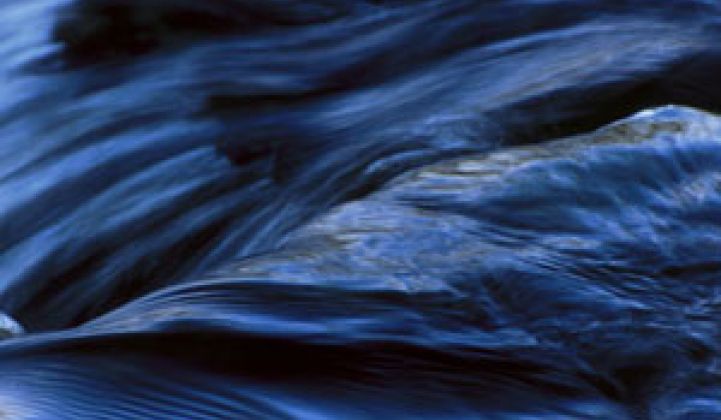Epuramat says it can take water from your toilet and bring it back to the tap with almost no external energy.
The company's Box4Water – an industrial container that stands about ten meters high – can remove solids and biological material, depending on the configuration, from water largely by exploiting the power of gravity, according to Herman Blanke, director of business development for North America.
A single unit measuring 20 feet in length can purify all the water for a large hotel, he said, or a village of 200 to 1,000 people. The key is that the device operates on no, or almost no, energy. The only energy that is required is the energy to pump the water to the top of the thing. If the unit is beneath the incoming water stream, the water can flow in and purify itself through gravity.
The company has installed systems in Europe and is talking to a large Canadian petroleum producer to install one to remove oil from waste water in a tar sands operation near Saskatchewan. In about eight weeks, it will install a unit for Calera, the somewhat stealthy green cement company backed by Khosla Ventures, in Calera's prototype plant in Moss Beach, California, he said. (And there's your second story-Calera is prepping to test its technique for making cement from plankton and captured carbon dioxide.)
By contrast, traditional desalination processes, like reverse osmosis, are heavily dependent on energy: Water has to be pressurized so it can be forced through a cleansing membrane. Other recent novel ways to clean water include purifying it with ammonia salts in a forward osmosis process from Yale spin-out Oasys.
Like Sweden's Watreco and an experiment underway at Parc, Epuramat exploits the power of vortices to clean water. In a vortex, the water begins to swirl toward the bottom in ever-tightening circles, similar to water going down a drain. As the rotational speed of the water picks up, solids and other materials form a beam inside the water. The solids can then be sucked out with a vacuum, leaving water clean enough to drink, or re-use in a refinery.
"It's a bit of biomimickry," he said during an interview at the Cleantech Forum taking place in San Francisco this week.
An Austrian forestry expert named Viktor Schauberger championed ideas about natural water flow in the first few decades of the 20th century, Curt Hallberg, the CTO of Watreco explained earlier this year. He was derided as a kook, particularly when he admitted that he got the idea from watching how fish could stay in one spot in a rushing stream by barely moving and from watching how large egg-shaped boulders can "dance" at the bottom of rivers. (Fish can do this because water rushes into their mouths and swirls out the gills to create a vortex. With the rocks, the shape is the trick). Although dismissed by scientists in the Third Reich, his ideas are once again gaining adherents.
Along with exploiting vortex purification, Epuramat can add additional modules to its unit to clean out particular types of particles or ensure that all of the biological material is removed.
The company is currently trying to raise $13 million in a second round of funding.



